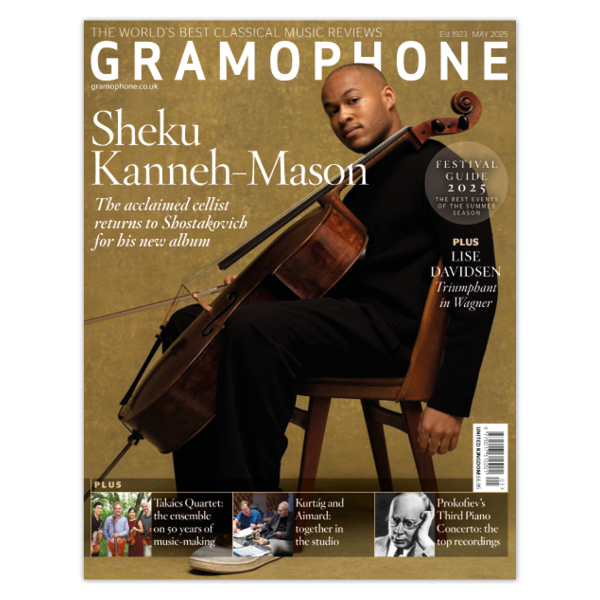Lowell Liebermann Plays Piano Music of Theodor Kirchner
View record and artist detailsRecord and Artist Details
Composer or Director: Lowell Liebermann
Genre:
Instrumental
Label: Blue Griffin
Magazine Review Date: 01/2024
Media Format: CD or Download
Media Runtime: 136
Mastering:
DDD
Catalogue Number: BGR655

Tracks:
| Composition | Artist Credit |
|---|---|
| Skizzen – Kleine Klavierstücke |
Theodor Kirchner, Composer
Lowell Liebermann, Composer |
| Legenden |
Theodor Kirchner, Composer
Lowell Liebermann, Composer |
| Nachtbilder |
Theodor Kirchner, Composer
Lowell Liebermann, Composer |
| Notturnos |
Theodor Kirchner, Composer
Lowell Liebermann, Composer |
| Ideale |
Theodor Kirchner, Composer
Lowell Liebermann, Composer |
| Elegies |
Theodor Kirchner, Composer
Lowell Liebermann, Composer |
Author: Jed Distler
Lowell Liebermann’s prowess at the keyboard usually takes a back seat to his prominence as a composer. He made up for lost time in 2021 with his debut solo piano release for Steinway & Sons, featuring works by Busoni, Liszt, Kabeláč, Schubert and himself. Then in 2022 he devoted an entire Steinway double album to works by the contemporary British composer David Hackbridge Johnson. Blue Griffin now presents a third two-disc set, this time given over to the works of Theodor Kirchner (1823-1903).
Admired as both a pianist and an organist throughout his career, Kirchner’s long life was a mess, largely due to financial instability caused by extravagant spending and compulsive gambling, as well as an addiction to alcohol. Still, his compositions were promoted by Mendelssohn and Schumann, while, in turn, Kirchner championed his younger colleague and friend Johannes Brahms. Most of Kirchner’s prolific solo piano output consists of short pieces collected into larger groups. They owe their style to Mendelssohn and Schumann, while sometimes foreshadowing Brahms.
In the 15 Skizzen, Op 11, for example, the third piece’s imitative sequences and overall asymmetry evoke Schumann’s Davidsbündlertänze, while the bracing No 6 could change places with a similar ‘hunting’ piece in any Schumann cycle and we’d be none the wiser. On the other hand, the lyrical melancholy and ample textures characterising some of the Legenden, Op 18 (especially Nos 1 and 8), point the way towards Brahms’s late Klavierstücke.
Kirchner’s individual stamp truly begins to emerge in the 10 character pieces comprising Nachtbilder, Op 25, where Liebermann’s pianism acquires more solidity, sheen and élan, with less reliance on the pedal to shape long legato phrases. He revels in the first piece’s darting leaps and booming bass octaves, while not bearing down on No 3’s heavy-gaited waltz. No 4’s obsessive Schumannesque dotted rhythms have welcome rhythmic spring and forward impetus. Most composer/pianists tend to be aware of harmonic motion and inner voices, and that’s particularly true in regard to the way Liebermann parses No 7’s quirky arpeggiated figures. By contrast, his straightforward readings of the four Notturnos, Op 28, are a tad literal, reserved and dynamically constricted for my taste; I could imagine more pliable tempos and curvaceous cantilenas. The pianist gorgeously voices the sparse textures in the opening section of the third of the Elegien, Op 37, yet he grows tense and loses tonal openness in the climaxes. All in all, Liebermann serves Kirchner’s cause admirably, and he provides extensive annotations that are both scholarly and musically insightful.
Discover the world's largest classical music catalogue with Presto Music.

Gramophone Digital Club
- Digital Edition
- Digital Archive
- Reviews Database
- Full website access
From £8.75 / month
Subscribe
Gramophone Full Club
- Print Edition
- Digital Edition
- Digital Archive
- Reviews Database
- Full website access
From £11.00 / month
Subscribe
If you are a library, university or other organisation that would be interested in an institutional subscription to Gramophone please click here for further information.




